Portugal's Schist Villages: Timeless Beauty in Stone
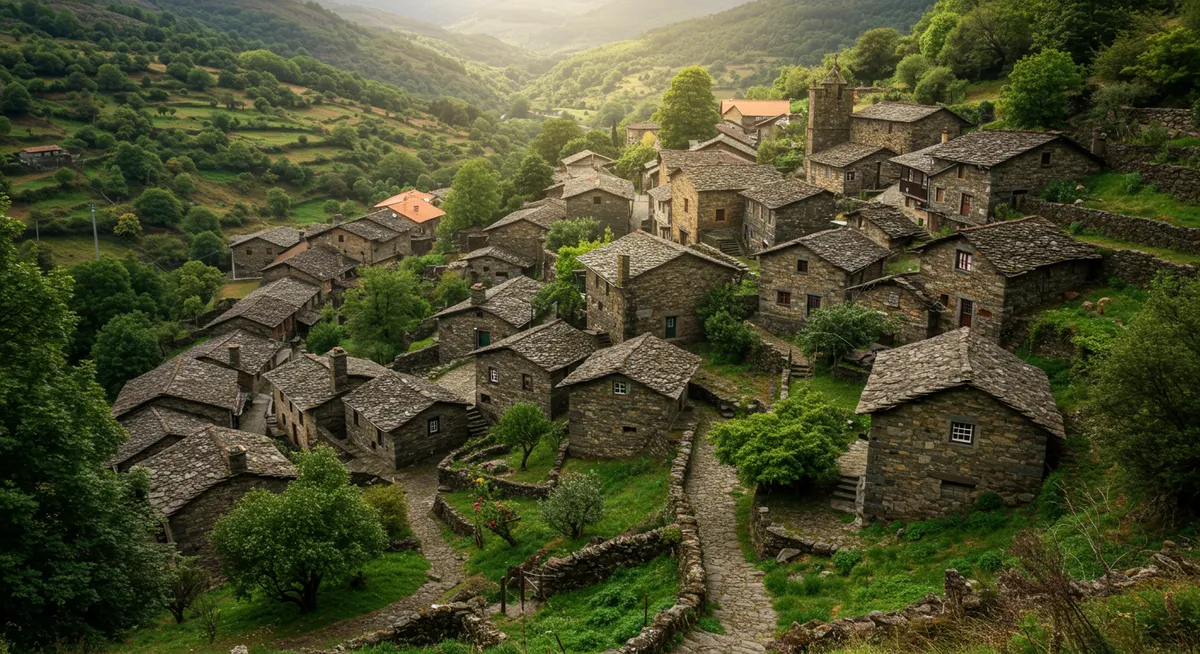
Portugal's Schist Villages: Timeless Beauty in Stone
Nestled in the forested mountains of central Portugal lies a network of extraordinary historic settlements built almost entirely from schist—a local metamorphic stone that defines their distinctive appearance and character. These aldeias do xisto (schist villages) represent remarkable examples of vernacular architecture perfectly adapted to challenging mountain environments. Once facing abandonment as rural populations migrated to cities, many of these villages have experienced thoughtful revitalization, carefully preserving their architectural heritage while welcoming visitors and new residents. From perfectly preserved medieval layouts to buildings showcasing master stonework, these villages offer authentic glimpses into Portugal's rural heritage.
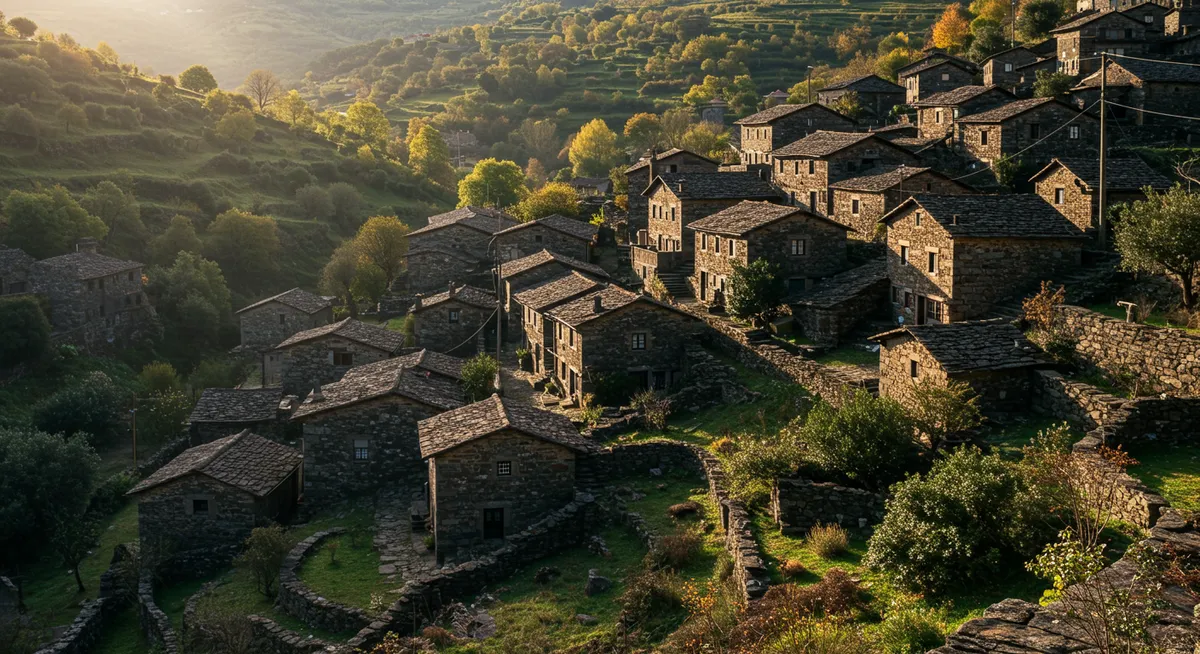
1. Talasnal: Artistic Renaissance in Stone
Perched high on the slopes of the Serra da Lousã in central Portugal, Talasnal represents one of the most successfully revitalized schist villages. This once-abandoned settlement has experienced a remarkable renaissance through thoughtful conservation that maintains its architectural integrity while introducing new life through arts, crafts, and sustainable tourism. The village's tightly packed schist houses with their distinctive slate roofs create a remarkably cohesive stone landscape that seems to grow organically from the mountainside itself.
What Makes It Special
- Architectural Integrity: Features exceptional examples of schist construction with minimal modern alterations
- Creative Revival: Has attracted artists and artisans who have carefully restored buildings while respecting traditional techniques
- Natural Setting: Surrounded by chestnut forests and mountain springs with dramatic views over the Serra da Lousã
- Accessibility: One of the more accessible schist villages while still maintaining an authentic atmosphere
Historic Significance
Talasnal's origins date to medieval times when it developed as a self-sufficient mountain community based on agriculture, livestock, and forestry. The village architecture evolved as a direct response to the mountain environment and available materials—primarily local schist stone and chestnut wood. By the mid-20th century, rural exodus had nearly emptied the village as residents sought better economic opportunities in cities. Unlike many abandoned rural settlements, Talasnal experienced revitalization beginning in the 1990s, with urban dwellers seeking weekend retreats and eventually artists and entrepreneurs establishing permanent presences. This revival has been carefully managed to preserve the village's architectural and cultural integrity.
What to Experience
Explore the narrow winding paths between tightly packed schist houses, noting the brilliant stonework techniques that have endured for centuries. Visit village workshops where artists and artisans create contemporary works inspired by traditional materials and techniques. Enjoy mountain cuisine at Ti'Lena, a renowned tavern serving traditional dishes like chanfana (goat stew) and castanhas (chestnuts). Discover natural features surrounding the village, including mountain springs, ancient chestnut groves, and dramatic viewpoints. Stay overnight in carefully restored traditional houses that maintain their historic exteriors while offering comfortable interiors.
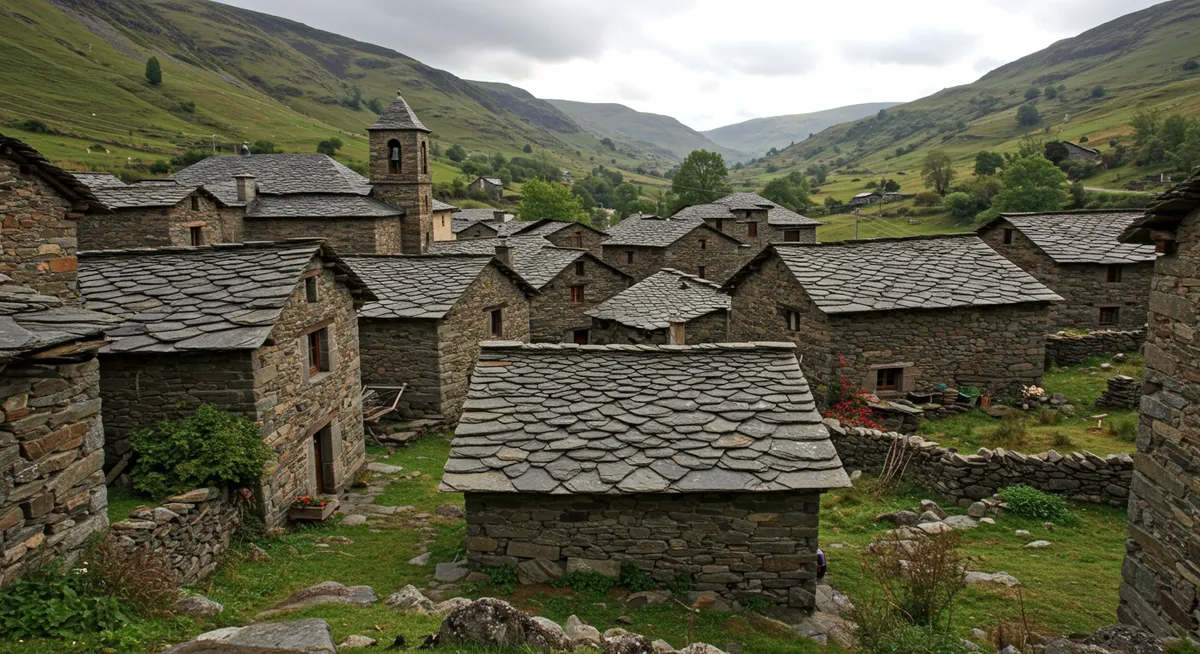
2. Piódão: The Mountain Nativity Scene
Often compared to a nativity scene set in stone, Piódão presents perhaps the most picturesque and cohesive of all Portugal's schist villages. Nestled in a remote valley of the Serra do Açor mountains, this extraordinary settlement features tightly clustered schist houses cascading down a steep slope, their uniformity broken only by the whitewashed church at the bottom. The remarkable visual harmony of blue-painted doors and windows against the gray-brown schist creates one of Portugal's most distinctive historic villages, earning it classification as an "aldeia histórica" (historic village) of national importance.
What Makes It Special
- Visual Cohesion: Presents an extraordinarily unified architectural ensemble with buildings constructed of identical materials
- Blue Accents: Features distinctive blue-painted doors and windows that create a striking contrast with the schist stone
- White Church: The Igreja Matriz (parish church) stands out as the only whitewashed building, creating a focal point in the stone landscape
- Water Systems: Maintains historic communal fountains and water channels that once supported village life
Historic Significance
Piódão's isolated location in the mountains contributed to its development as a highly self-sufficient community with distinctive building traditions. Local legend suggests the village may have originated as a refuge for Jews fleeing persecution during the Inquisition, though its documented history dates to the early medieval period. The remarkable uniformity of construction resulted from the limited materials available—local schist stone for walls, slate for roofs, and chestnut wood for structural elements. The village's remoteness preserved its traditional appearance as modernization transformed more accessible settlements. In 1978, Piódão was classified as a site of public interest, leading to conservation efforts that maintain its unique character.
What to Experience
Wander the narrow winding streets and stairways that connect the tightly packed stone houses, noting how buildings were constructed to maximize limited flat space. Visit the distinctive whitewashed Igreja Matriz de Nossa Senhora da Conceição, dating from the 19th century and beautifully contrasting with the surrounding schist structures. Explore the Piódão Museum showcasing traditional tools, household items, and the daily life of mountain communities. Discover the historic water systems, including the communal washing area and fountains that remain important features of village infrastructure. Hike surrounding trails to nearby waterfalls and viewpoints offering spectacular perspectives of the village in its mountain setting.
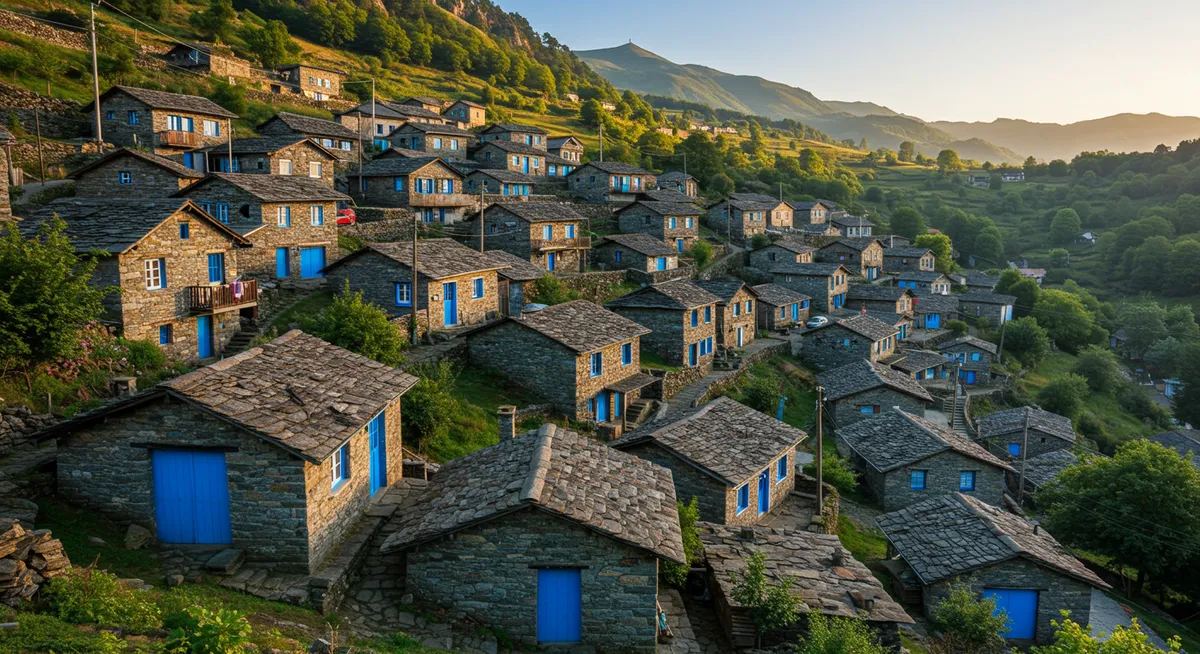
3. Cerdeira: The Village of Arts
Hidden deep in the chestnut forests of the Serra da Lousã, Cerdeira has transformed from an abandoned mountain hamlet to a thriving center for traditional arts and crafts. This remote schist village, accessible only by foot or 4x4 vehicle, has been carefully restored while maintaining exceptional architectural authenticity. What makes Cerdeira particularly special is its focus on artistic revival—the village now hosts an art center, regular workshops, and artist residencies focused on traditional crafts and their contemporary interpretations, creating a living laboratory for Portuguese rural heritage.
What Makes It Special
- Creative Center: Houses the Cerdeira Home for Creativity, hosting workshops and residencies focused on traditional crafts
- Authentic Restoration: Buildings have been meticulously restored using traditional techniques and materials
- Forest Immersion: Surrounded by ancient chestnut forest with a mountain stream running through the village
- Cultural Events: Hosts the annual "Elementos à Solta" (Elements at Large) art festival celebrating art in nature
Historic Significance
Cerdeira originated as a small mountain settlement focused on agriculture, livestock, and forest resources, particularly chestnuts which provided essential food and building material. The village architecture exemplifies the schist building tradition that evolved over centuries to address the specific challenges of mountain life, with stone walls providing insulation against both summer heat and winter cold. Like many rural Portuguese villages, Cerdeira was largely abandoned by the 1960s as residents sought employment in cities or abroad. Its revival began in the 1990s when Kerstin Thomas, a German artist, discovered the village and began restoring buildings. This individual initiative eventually expanded into a broader cultural project that has breathed new life into the village while preserving its architectural heritage.
What to Experience
Visit the Cerdeira Arts & Crafts School to learn about traditional crafts and participate in workshops focused on pottery, woodworking, or basket weaving using local materials. Explore the village buildings which showcase exceptional examples of schist construction, including distinctive features like granite lintels and schist roof tiles. Discover art installations integrated throughout the village, particularly during the annual arts festival. Stay in a carefully restored traditional house where historic exteriors conceal comfortable modern interiors designed with artistic sensibility. Hike surrounding forest trails to ancient shepherd shelters and mountain viewpoints with spectacular vistas of the Serra da Lousã.
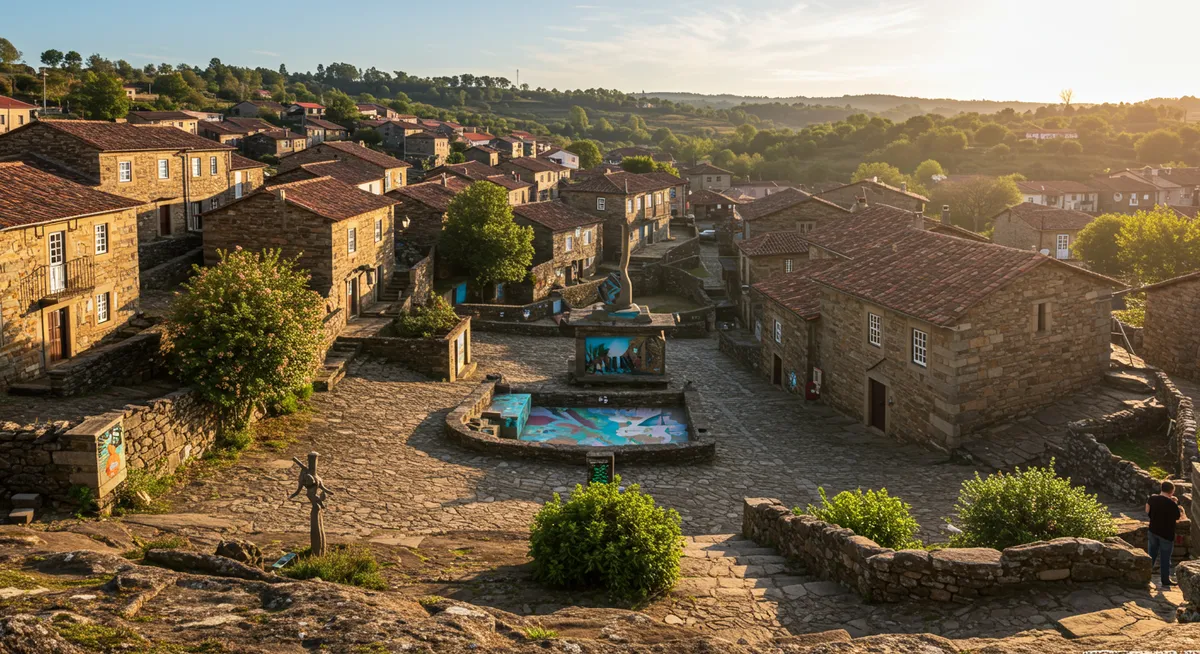
4. Álvaro: Medieval Schist Village with River Views
Dramatically situated on a hill above the Zêzere River in Portugal's Beira Baixa region, Álvaro combines the distinctive schist architecture of central Portugal with a remarkable medieval historic center. This ancient settlement, once an important administrative center with its own judicial system, preserves a unique urban layout with a central square, imposing pillory, and traditional schist houses arranged along narrow streets. The village offers a different perspective on schist construction, showcasing the material's use in a more formally organized settlement rather than the organic mountain hamlets found elsewhere.
What Makes It Special
- Medieval Urban Layout: Features a formal town square with historical administrative buildings unlike more organic schist villages
- Historic Pillory: Contains a well-preserved 16th-century pillory (pelourinho) symbolizing its historical judicial autonomy
- River Setting: Offers spectacular views over the Zêzere River valley from its elevated position
- Defensive Heritage: Retains elements of its former defensive importance, including strategic positioning and historic structures
Historic Significance
Álvaro's history begins in the medieval period when it developed as a strategic settlement controlling the Zêzere River valley. The village received its town charter (foral) in 1399 from King João I, granting it significant administrative autonomy and judicial powers symbolized by the pillory that still stands in the main square. Unlike smaller schist villages focused entirely on agriculture, Álvaro developed administrative, commercial, and defensive functions, reflected in its more formal urban organization. The village's importance continued through the 16th century before gradual decline as regional power centers shifted. This historical significance resulted in a different development pattern than purely rural schist settlements, with larger buildings and more formal public spaces, all executed in the region's characteristic schist construction.
Planning Your Portuguese Schist Village Tour
Portugal's schist villages showcase remarkable stone architecture and traditional building techniques. Consider these themed routes to explore these extraordinary settlements:
- Arts and Crafts Trail: Begin at Cerdeira and explore Talasnal to discover how traditional craftsmanship is being preserved through artistic revitalization
- Architectural Harmony Journey: Visit Piódão to experience one of the most visually cohesive stone villages in all of Portugal
- Historical Evolution Route: Explore Álvaro to understand how schist construction was adapted for different settlement types from rural hamlets to administrative centers
- Mountain Immersion Experience: Combine visits to multiple schist villages with hiking the connecting trails to experience the natural environment that shaped these unique settlements
Travel Tip: The best times to visit Portugal's schist villages are late spring (May-June) when mountain wildflowers are in bloom and early autumn (September-October) when the chestnut forests display brilliant colors. Be aware that many villages have limited or no services, so research dining and accommodation options in advance.
Related Content
If you're fascinated by Portugal's schist villages, you might also enjoy these related articles:
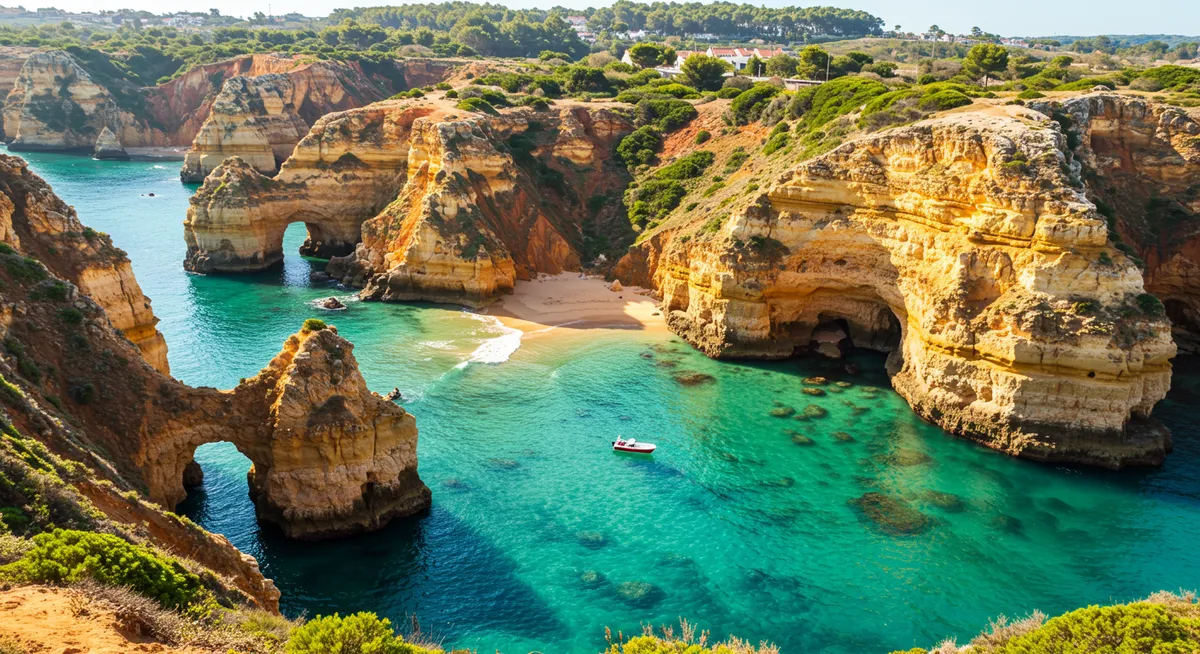
Secret Villages of Portugal: Beyond Lisbon and Porto
Discover Portugal's most enchanting hidden villages from the medieval walled town of Óbidos to the mountaintop sanctuary of Monsanto, offering authentic experiences away from tourist crowds.

Historic Mountain Villages in the Italian Alps
Discover Italy's most enchanting Alpine villages, from the medieval stone houses of Chianale to the Swiss-influenced architecture of Soglio and the spectacular setting of San Pietro in Valle.

Ancient Hilltop Villages of Greece You Can Still Visit
Journey through Greece's most spectacular historic villages, from the medieval fortress town of Monemvasia to the stone masterpieces of the Peloponnese and the timeless mountain settlements of mainland Greece.
Explore More Historic & Hidden Gem Villages
Discover more extraordinary villages across the Mediterranean and beyond.